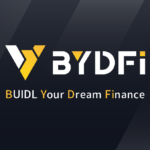Now Reading: Financial Literacy for High School Students: Ideas, Activities, & Resources
-
01
Financial Literacy for High School Students: Ideas, Activities, & Resources
Financial Literacy for High School Students: Ideas, Activities, & Resources

57
Financial literacy is an important life skill that prepares high schoolers for their financial futures. It encompasses everything from filling out the FAFSA for college to creating a budget and understanding your W-2. Financial literacy resources bring money management to the forefront through real-world simulations, scenarios, interactive tools, and podcasts.
With our suggestions, students won’t just learn, they’ll investigate, apply, and analyze financial decisions! So grab your pens and get ready to write down some smart resources specifically geared toward financial literacy for high school students.
How to Teach Financial Literacy for High School Students
April is Financial Literacy Month, so it’s a good time to start thinking about ways to teach your teens budgeting, saving, and more. The key is to keep it real and relatable so students stay engaged. Start with things they care about, like comparing cell phone plans or saving for a concert, rather than diving straight into 401(k)s. Make it interactive by using real-life scenarios, role-playing activities, and classroom simulations that let them make financial decisions in fun ways. Games like Kahoot, Blooket, or online budget challenges are great tools to boost engagement.
Don’t be afraid to bring in social media. Let students explore financial advice on TikTok, listen to short podcasts, or even create their own “Money Tip” videos. These lessons can easily tie into your math standards through activities like calculating interest, analyzing percentages, or graphing savings goals. With the right approach, financial literacy for kids of any age can be educational and something your students look forward to.
Examine why it’s important to include financial literacy for teens
Finances make the world go round, literally. So, point your students in the right direction before they even walk out of those doors into the “real” world. Understanding how a budget works, why saving is important, and how to manage debt helps them to avoid common pitfalls as they transition from teen to adult.
Additionally, you are strengthening their decision-making muscles by showing them how to avoid debt traps and reduce financial stress. Show them that life happens, and their budget isn’t always going to go their way. Throwing those challenging financial scenarios at them now helps them make cool and calm decisions later. What might be a good goal for high school with finances might not be the same when they become adults. Preparing your students to think critically about finances at every stage of life helps them feel prepared to make smart money decisions.
Show high schoolers how to build a budget and save like a pro
Before jumping into the world of planning a financial future, students need to know the basics of budgeting and saving. Mastering these concepts is more than just putting your money here or there, it’s using those critical thinking skills to make smart decisions designed to set students up for success.
These activities are a great way to get students thinking, and many align perfectly with CCSS for Math, like the CCSS.Math.Content.HSF-IF.C.7 and CCSS.Math.Content.HSF-BF.A.1.
- Learn to survive on a budget: Give your students a set amount of fictional income and have them create a budget for it. Then, give them real-life events (i.e., getting cars fixed) and have them figure out how they will modify their budget.
- Understand wants and needs: Your incoming freshmen and even some of your seniors might not understand the difference between wants and needs with finances. Have them create a list of their normal household expenses for a month and split it into needs and wants. They can then analyze their wants and whether they are worth the price.
- Play a budget showdown: Give students fake money and have them compete to create the best budget.
- Discover if the price is right: Give students a list of want and need items. Have them separate the items into wants and needs. Then, add a price to each one and have students discuss if the wants are worth the price.
- Create a budget escape room: Help students practice real-life budgeting skills by having them balance a budget, figure out a 401K, spot spending errors, and balance a checkbook as tasks in a DIY escape room.
- Debate the savings: Have students research real 401K options, checking accounts, IRAs, etc. They should then have a debate on the pros and cons of the different types of money accounts.
Budgeting Board Game for Financial Literacy – Students Practice Real Life Skills
By Exceptional ELA
Grades: 6th-12th
Make your financial literacy for teens stick with a game that uses real-life scenarios that impact financial choices. It includes a teacher guide, budgeting options, a score sheet, a board game, game cards, and a reflection worksheet.
Financial Literacy Comparing Checking Accounts Savings Accounts and CDs
By the Family and Consumer Science Classroom
Grades: 9th-12th
Give your students a leg up when it comes to saving by having them complete activities that simulate real-world choices, like choosing a bank and making deposits. The package includes vocabulary words, comparison sheets, reflection questions, and banking posters.
Retirement Accounts IRAs Pensions Social Security Financial Literacy Lesson
By The Unraveled Teacher
Grades: 11th-12th
Standards: CCSS CCRA.W.1, CCSS CCRA.W.4
This ELA resource covers the different aspects and requirements of social security. It allows students to create argumentative essays about problems in the social security sphere. It includes lecture slides, vocabulary words, a pre-activity, an answer key, tasks, and an essay prompt.
Personal Finance Project with Job Planning, Budgeting, and Financial Choices
By Noodle Nook
Grades: Any
Give your students a little math practice by having them explore realistic job choices, budgeting, and making independent financial decisions. The activity includes decision cards, job cards, financial choices, and student worksheets.
Tackle career and graduation financial literacy topics
Part of financial literacy for high schoolers is talking about career paths, wages, and FAFSA, if they plan to attend college. By diving into career exploration for high school students, they’ll see how a solid financial background is necessary to set financial goals, explore student loans, and pay their bills.
Since a solid financial literacy roadmap is the key to success, try out these fun activities:
- Understand career compensation: Have students compare the salaries of different careers they are considering, including bonuses, raises, etc. They will consider how they might need to budget their needs and wants for each career.
- Play a debt and savings game: Have students think of different college expenses that might pop up. Then, students need to draw the scenarios and modify their budget for each. The most efficient budget wins.
- Plan future goals: Have students create a chart that sets their financial goals for different years in the future (i.e., 1, 5, 10, 20). They should plan how to reach those goals.
- Simulate a student loan: Have students research a student loan, including interest rates, fees, repayment plans, etc. They then need to figure out how the interest and fees will add up before they pay off the loan. Take it a step further by having them figure out ways to pay off the loan early and how much that will save.
Financial Literacy Tax Forms & W-4 Career Exploration High School Consumer Math
By Caffeine Queen Teacher
Grades: 9th-12th
Help your students understand federal taxes by looking at 2020 forms using interactive articles, assessments, and presentations. The bundle includes a printable and digital version with everything you need to get started, including an answer key.
Financial Literacy Bulletin Board | FAFSA
By College Counselor Studio
Grades: 6th-12th
Teach your students about FAFSA, financial aid, and college payment options by downloading this editable bulletin board. It includes customizable posters, key deadlines, FAQs, and motivational messages that provide your students with the right tools to ace their college journey.
Crush the confusion around credit
Credit is not something a lot of kids are going to be clear about. Stomp out their confusion about credit scores, applications, and related terms with fun games and activities. Many of these activities can align with CCSS.Math.Practice.MP4 and HSF-IF.B. 4 & B.5.
- Simulate a credit score: Have students start with a set credit score. Simulate what happens when certain events take place, like missing a payment or paying off a loan. Discuss ways to build and hurt credit together.
- Create a credit debate: Have students research all the different parts of credit. They will then debate the pros of credit and some of the hidden dangers.
- Design a credit myth poster: Have students research one myth about buying on credit and create a poster to show their myth and how they busted it.
- Find the best loan and credit card: Have students research several different loans and credit cards and try to find the one with the best rates and perks. They should present their findings.
- Record a credit podcast: Have students research credit cards and create a podcast about what they learned.
- Design a credit application: Give students blank credit applications as a guide and have them design a credit application for an imaginary bank, complete with terms. Others in the class can then fill out the credit applications.
Consumer Math & Financial Literacy – Credit Card Project (with Google Slides™)
By Mister G’s Teacher Shop
Grades: 5th-12th
The basics of credit cards are easily broken down and parsed out in this bundle, covering the hows, whys, and whos of credit cards and payments. The resource includes worksheets, videos, a sample card statement to dissect, and a scoring rubric for the project.
Credit Card Simulation
By Classroom on a Cart
Grade: 5th-12th
Simulate real-world financial skills by having students complete a credit card simulation activity that uses store credit cards, interest calculations, analysis of cost terms, and writing a check. You get detailed instructions, a teacher packet, and Excel spreadsheets for students and teachers.
Connect with outside sources to improve financial literacy lessons
Empower students to get a head start on their finances by incorporating some of these fun resources into your lessons. Many resources provide you with step-by-step instructions to wow your teen audience on a topic that might not scream “exciting.”
- Your Life Your Money: This hour-long podcast from PBS breaks down the basics of financial planning and fiscal consciousness with a fun host.
- My Money: Chartered by the Federal Financial Literacy and Education Commission (FLEC), this source has games, activities, and information on a range of financial topics and provides federal guidelines and curricula.
- Federal Reserve Education: This government resource offers access to materials on economics and personal finance through online courses, podcasts, and interactive lessons.
- Investor.gov: Backed by the U.S. Securities and Exchange Commission, Investor uses free financial planning tools like calculators, analyzers, and articles to teach various topics like retirement, budgeting, and expenses.
- Planet Money: Keep it fun and real by using the Planet Money podcast to help explain finance, tariffs, budgeting, and more.
- Consumer Financial Protection Bureau: This government-based resource offers research-based activities and stories to teach healthy financial habits.
Create a class of finance pros with resources from TPT
Make financial literacy for high school students exciting by ensuring that every project you throw at them is fun and interactive. Not only will they enjoy the lesson, but they will thank you for it later. Browse the large collection of financial literacy resources for high school from TPT — you’ll find something for everyone, and it might just work perfectly into your math block.





















:max_bytes(150000):strip_icc()/FRI-Dzonsli-97846c46726a4e528b0e46ac9ee97bae.jpg?w=1024&resize=1024,1024&ssl=1)
:max_bytes(150000):strip_icc()/GettyImages-1330143286-3216e42a6fbc4f2d964e2e727bb52c2f.jpg?w=1024&resize=1024,1024&ssl=1)







